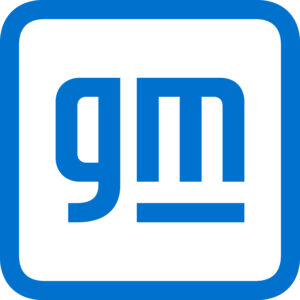
GM years ahead in securing renewable energy resources, announces EV battery tech collaboration
By onMarket Trends | Technology
General Motors has finalized energy sourcing agreements to secure 100% of the energy needed to power all its U.S. facilities by 2025 — five years ahead of the 2030 target.
GM expects to avoid the production of an estimated 1 million metric tons of carbon emissions that would have been produced between 2025 and 2030, equal to the emissions produced by burning 1 billion pounds of coal, a news release from the OEM states.
“We believe it is critical — to ourselves, to our customers and to the future of the planet — to step up our efforts and reach ambitious targets that move us closer to a more sustainable world,” said GM Chief Sustainability Officer Kristen Siemen, in the release. “Securing the renewable energy we need to achieve our goal demonstrates tangible progress in reducing our emissions in all aspects of our business, ultimately moving us closer to our vision of a future with zero emissions.”
The OEM will eventually decarbonize with a renewable energy strategy “rooted” in four pillars:
-
- “Increasing Energy Efficiency: GM’s energy goals begin with reducing energy consumption by improving energy efficiency. For 11 years, GM has been awarded the EPA Energy Star Sustained Excellence Award for its energy efficiency efforts.
- “Sourcing Renewables: While it works to minimize the amount of energy required to run its facilities, GM also sources renewable energy through direct investment, on-site generation, green tariffs and power purchase agreements. This is the main way through which GM is achieving its renewable energy goal.
- “Addressing Intermittency: GM is creating technology to store renewable energy over the medium and long term, so its power consumption is not disrupted by external fluctuations.
- “Policy Advocacy: Policy efforts are essential to expand transmission, create microgrids that help deploy renewable energy and enable markets to price these solutions to enable a carbon-free resilient power system. GM supports policies that enable a carbon-free, resilient power system.”
GM’s renewable energy portfolio now includes sourcing agreements from 16 renewable energy plants across 10 states. Since 2017, the portfolio has produced more than $75 million of positive cash flows.
In 2019, GM became a founding member of what is now known as the Clean Energy Buyers Association — the largest group of corporate renewable energy buyers in the U.S.
“General Motors has been a trailblazer in corporate clean energy procurement for manufacturing facilities for over a decade,” said Miranda Ballentine, CEO of the Clean Energy Buyers Association, in the release. “Today’s announcement of securing the energy needed to achieve their 2025 goal is another example of their leadership. But even more impressive has been GM’s commitment to sharing their learnings and guiding other corporations who want to follow their lead. In a world of high competition, this community-orientation is truly wonderful.”
Last year, GM announced its “Science Based Targets” for emissions reduction and plans to become carbon neutral in its global products and operations by 2040. Tailpipe emissions from new U.S. light-duty vehicles are slated for elimination by 2035 and the OEM has committed to invest $35 billion in electric and autonomous vehicles through 2025.
GM also announced last week that it will work with battery manufacturer Microvast to develop specialized electric vehicle (EV) battery separator technology and build a new separator plant in the U.S., supported by a $200 million grant from the U.S. Department of Energy’s Battery Materials Processing and Battery Manufacturing initiative.
Separators are safety-critical EV battery components that separate the anode from the cathode to allow for ion transfer, according to a GM news release. The automaker’s contribution will be its “cutting-edge” separator and coating technology. The companies will work together to develop new separator technology that “can help improve EV safety, charging, and battery life,” according to GM.
“This advanced technology is designed to enhance thermal stability of EV batteries and work with nearly all types of lithium-ion cells, including graphite, silicon, and lithium-metal anodes and nickel-rich, cobalt-free, lithium iron phosphate-type and high-voltage cathodes,” the news release states.
Microvast Chief Technology Officer Wenjuan Mattis said the company expects “the safety advantages of our innovative, highly thermally stable polyaramid separators to transform high-energy lithium-ion battery development and drive significant value for the industry.”
GM Chief Technology Officer and Research and Development Vice President Kent Helfrich added, “This collaboration with Microvast supports our ongoing efforts to develop a North American-focused EV supply chain and help put everyone in an EV. It will also provide us with pioneering separator technology that can be used in future Ultium batteries, and most importantly, supports our continuing commitment to safety.”
The Department of Energy has selected GM to be part of its Battery500 Consortium, which is being awarded $75 million for a second phase of research. Led by the Pacific Northwest National Laboratory, the consortium is made up of a team of battery experts from national laboratories, academia, and industry working to develop more reliable, affordable, longer-range, and higher-performance EV batteries, according to GM. GM is the only auto manufacturer selected for the consortium.
Images
Featured image credit: General Motors
